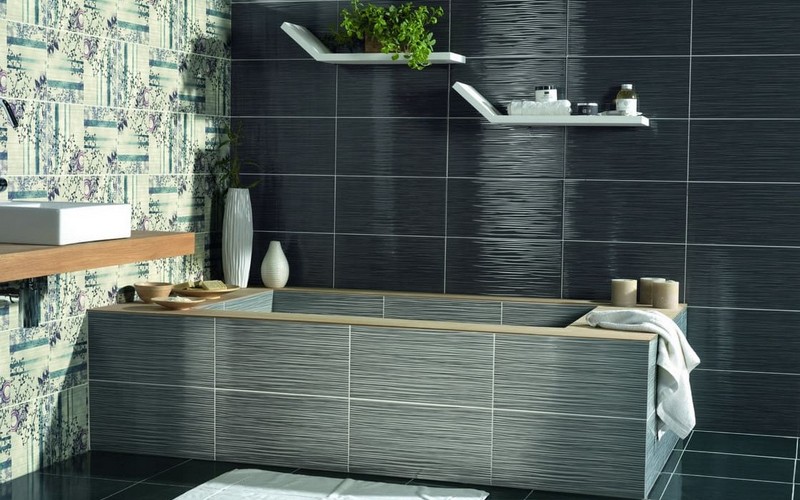A Comparison of Porcelain and Ceramic Tiles
The words “ceramic” and “porcelain” are frequently bandied around when starting a tile-related home repair job. Although these phrases can seem to be equivalent, they really refer to two different materials that have slight differences. RAK Tiles wants to help you make the best decision for your particular project by demystifying the distinctions between ceramic and porcelain tiles in this thorough guide.
Recognizing the Fundamentals
Although porcelain and ceramic tiles look similar on the outside, they actually have different qualities. Both fall within the general category of ceramic tiles, which are made from uncooked clay and fired at high temperatures. However, because to certain factors, especially those concerning water absorption, porcelain tiles have carved out a distinct character.
Porcelain Tile: Durability and Finesse
With a water absorption rate of 0.5 percent or less, porcelain tiles are recognized for their extraordinary toughness and amazing water impermeability. Porcelain tiles are made from a mixture of fine kaolin clay that has been enhanced with quartz and feldspar, and they have a thick, fine-grained structure. Typically between 2,200 and 2,500 degrees Fahrenheit, they are fired at temperatures that are substantially higher than those of ceramic tiles. These tiles must pass strict tests demonstrating their capacity to absorb less than 0.5% of their weight when submerged in water in order to be awarded the coveted “porcelain” moniker. However, this resilience comes at the cost of increasing fragility. Since porcelain tiles are more difficult to cut precisely than ceramic tiles, expert installation is frequently required.
Ceramic Tile Is Versatile and Reasonably Priced
Ceramic tiles are fired at lower temperatures than porcelain tiles and use coarser clay. Although slight, the differentiation provides a more affordable option with greater adaptability. When used as countertops, ceramic tiles offer a wide variety of designs and sheen while still being do-it-yourself easy.
Compare Important Elements
Several important factors are relevant when contrasting these two tile options:
Appearance
Porcelain tiles have a wider variety of colors, designs, and surface treatments.
Water and Heat Resistance
Porcelain tiles are excellent at withstanding heat and moisture, making them suited for outdoor usage in temperate areas.
Extra Care & Scrubbing
Due to its increased density, porcelain tiles could have a modest cleaning advantage.
Upkeep
Porcelain tiles require less upkeep than other types of tile because of its enhanced density and longevity. They also withstand damage and chipping better.
Installation
Ceramic tiles prove to be a little easier to install, especially for DIY enthusiasts, due to its softer nature and ease of cutting.
Cost Evaluation
Your choice may be considerably influenced by cost. Porcelain tiles normally cost between $4 and $8 per square foot, but ceramic tiles typically cost between $3 and $4.
Longevity and Robustness
While porcelain outperforms ceramic tiles in many areas, both materials demonstrate remarkable heat and water resistance. Ceramic tiles can also have a long lifespan when properly sealed and maintained, but porcelain tiles frequently last for 75 to 100 years with good maintenance.
Image is Important
While porcelain and ceramic tiles first may appear to be similar, ceramic provides a broader range of hues, textures, and finishes. On the other hand, porcelain is excellent at imitating the appearance of other materials like wood and natural stone, providing a distinctive aesthetic.
Pros and Cons of Choosing the Right Tile
Consider the advantages and disadvantages of ceramic and porcelain to decide which is best for your project:
Advantages of Ceramic Tile
- Increased variety in finishes, textures, and colors
- Self-installing installation
- More cost-effective
Drawbacks of Ceramic Tile
- Less resilient and water-resistant
- Unfit for usage outside
Porcelain Tile Benefits
- Suitable for locations with heavy traffic
- Less likely to display cracks and chips
- Very durable against stains and water absorption
Porcelain Tile Drawbacks
- Higher cost Recommended professional installation
The Best Option in Various Fields
Bathrooms
Given that porcelain tile resists water, it is the best option.
Kitchen
For kitchen countertops and flooring, porcelain is best, although glazed ceramic tiles with a PEI rating of 3 or 4 can also work.
Walls
Unglazed ceramic tiles, in particular, give more versatility.
Patios
Porcelain tiles are the best choice for outdoor patios because of their high weather resistance.
End Note
Ceramic and porcelain tiles each have advantages and disadvantages that make them suited for particular applications. Ceramic tiles are a great option for low-traffic spaces, DIY projects, and ornamental endeavors. Porcelain stands out as the better choice for places that must be resilient against substantial foot traffic and water exposure. For porcelain, expert installation might be required, but it provides a tough and water-resistant surface.
The exact requirements of your project and your budget will ultimately determine whether to choose ceramic or porcelain. If you carefully consider your needs, you’ll be able to locate the perfect tile to turn your room into a timeless masterpiece.
Visit RAK ceramics Dubai for a huge collection of high-quality tiles, including porcelain and ceramic alternatives. To improve the aesthetics of your room, find the ideal tiles.
Snowboarder, father of 3, music blogger, hand letterer and growthhacker. Working at the nexus of beauty and function to create strong, lasting and remarkable design. I’m a designer and this is my work.
